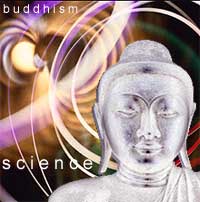 There is a simple fact being largely ignored by those engaging science and religion: it is not an exclusively Christian enterprise. Dialogue with other religions can make some of the work being done in the field look downright ridiculous. Understanding how another religion has learned from science can reveal the presuppositions used when looking at science only out of a Christian framework. That is, last week’s discussion about method could be a complete waste of time if it is limited only to Christians.
There is a simple fact being largely ignored by those engaging science and religion: it is not an exclusively Christian enterprise. Dialogue with other religions can make some of the work being done in the field look downright ridiculous. Understanding how another religion has learned from science can reveal the presuppositions used when looking at science only out of a Christian framework. That is, last week’s discussion about method could be a complete waste of time if it is limited only to Christians.
Bringing this up is, admittedly, a bit more throat clearing before getting into the heart of our regular inquiries starting with evolutionary science next week. However, instead of evangelizing you about why comparative theology matters for Christians engaging science myself, I will let Paul Ingram do it for me. His recent book Buddhist-Christian Dialogue in an Age of Science makes my case that our four-part monthly investigations will need to bring in perspectives from other religions when relevant. This may be an obvious truth for many, but I still think the reasons for this inclusion need to be explained rather than being done ad hoc.
Ingram’s book is set up by a review of Ian Barbour’s conflict, independence, dialogue, and integration typology for science and religion, the same one covered last week. That typology is then applied to the ways Buddhism and Christianity have related to specific scientific domains throughout the rest of the book. I feel I should point out that not everyone is thrilled with this revival of Barbour’s typology. In 2007 the journal Zygon devoted an issue to the agenda for science and religion in which several scholars argued a shift was occurring. For example, Wesley Wildman argued people were no longer cooking up grand schemes for orchestrating the worlds of science and religion into a whole and were instead tackling pressing issues through science where applicable. In other words, typologies and method are not that interesting because people just do what they do. Whether it be the ecological crisis, biotechnology, or specific ethical problems from a biological perspective (to tease future topics to be covered), those in the field now just do what they do and try to solve pressing problems regardless of what formal methods are supposed to exist.

But if Barbour’s typology is old and tired, its comparison with a similar Buddhist arrangement from Jose Ignacio Cabezon is significant. In his essay “Buddhism and Science: On the Nature of the Dialogue” Cabezon points out that Buddhism and science have related through conflict/ambivalence, compatibility/identity, and complementarity. Ingram points out that these ways of relating are similar to Barbour’s breakdown and perhaps give it new legs when applied to an interreligious dialogue with science. So just like the initial emergence of the field of religion and science, comparative theology has brought a methodological revival on two levels.
First, traditional questions like Barbour’s concerning the relation between science and religion may need to be reopened if that religious partner is to be understood pluralistically. When I was first taught religion and science as a distinct field, I was given 16 different typologies to learn. Perhaps that list could be narrowed and refined depending on whether a given model can handle the way multiple religions relate to science. I presume we may find new models are needed as well, but I think Ingram may already have provided a surprising result. Barbour’s “tired old” model may be even more significant that we realized since it matches what Buddhists have been up to rather well. Second, beyond the field of religion and science, Ingram’s book offers a new method for doing theology. Since the way different religions relate to science can be coherently connected to similar models, it is becoming clear to me that any theology giving reasonable responses for today’s world will be comparative interreligiously and scientifically. If I am right then we might be seeing the emergence of a new field or at least sub-field setting forth the daunting task of being fluent in the languages of science and multiple religious traditions, but I don’t think anything less can be adequate any longer.
Here is an example of what I mean.
We could undertake comparative theology between different religions. Separately we could ask how different religions relate to science independent of another religious dialogue partner. Those results might then impact how each religion engages another in dialogue. Alternatively, it would be possible to consider whether the way an individual religion engages science impacts an already occurring interreligious dialogue. The reason I think it would be good to engage in such a breakdown and piece by piece comparison is that it can be easy to look silly as a theologian. It looks odd to engage the sciences with theological categories comparativists and pluralists have rejected. It similarly looks odd to engage in comparative theology when other theologians engaging science have rejected the concepts being compared due to their knowledge of science. Essentially, as I see the take-away point of Ingram’s book, interreligious dialogue, and now interreligious dialogue with science, point to the fact that religious life, like science, is an ongoing experiment to see what works and what can be improved over time as technology changes and places are brought together.
For someone such as myself who sees theology as comparative, pluralistic, and informed by the best science, I thank Paul Ingram for paving the way by showing such a method is at least coherent.












